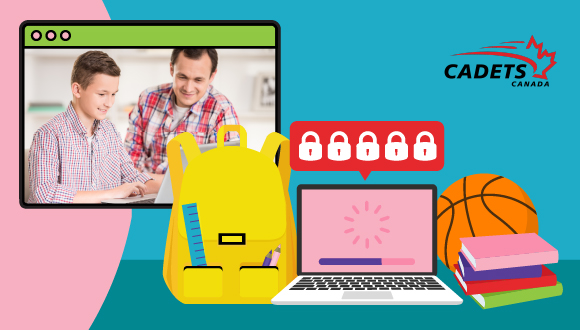Written by Loïc Verreault, Cadets Canada
 Youth is the perfect time to learn, whether in our interpersonal relationships, at school, in our athletic activities, or in any other realm. There’s no time like the present to implement basic cybersecurity concepts into the education of young people and help them optimize their cybersecurity abilities. This blog post provides tips on how to empower youth to learn about cybersecurity and become cybersecurity champions for generations to come!
Youth is the perfect time to learn, whether in our interpersonal relationships, at school, in our athletic activities, or in any other realm. There’s no time like the present to implement basic cybersecurity concepts into the education of young people and help them optimize their cybersecurity abilities. This blog post provides tips on how to empower youth to learn about cybersecurity and become cybersecurity champions for generations to come!
Making learning fun with interactive games
Cybersecurity is a serious topic that can be difficult to discuss with youth. A good way to start teaching youth about cybersecurity is with engaging and stimulating content such as interactive activities. Many interactive resources are available on the Get Cyber Safe website to further educate our future generations. Many of these resources allow them to develop their cybersecurity skills while having fun. And you can join them. Who knows? Maybe you'll learn something new!
Pass on the right information
Some sites may want to mislead you. Make sure you get your information from reputable sources, such as government websites or reliable organizations like MediaSmarts. This way, you’ll be sure that the resources available to you are trustworthy, which will help ease this learning process. Start with topics that are most important to young people, such as creating a strong password, social networks and video game consoles, to name a few. After these concepts have been fully explored, introduce a few more, like phishing, so youth can start recognizing them.
Learn by exploring
Allowing youth to explore different online platforms helps them develop their knowledge of cyber security. Their comfort level will allow them to better detect suspicious content and more easily secure their accounts. It’s also a good idea to introduce youth to examples of phishing emails or messages so they get familiar with them and avoid becoming a victim of phishing and other online scams in the future. Test their knowledge of phishing (and your own!) by taking this quiz. And of course, monitoring youth’s activity on their devices is very important to avoid the sharing of sensitive information. This can be done by installing parental controls on your devices (or on certain apps), and, of course, by installing an antivirus software as well.
In conclusion
With these tips, you will be better equipped to help teach youth about cyber security. We all have a role to play in cyber security, and the best way to ensure a cyber secure future for future generations is to pass on the knowledge... Regardless of age, together let’s ruin a cybercriminal’s day!